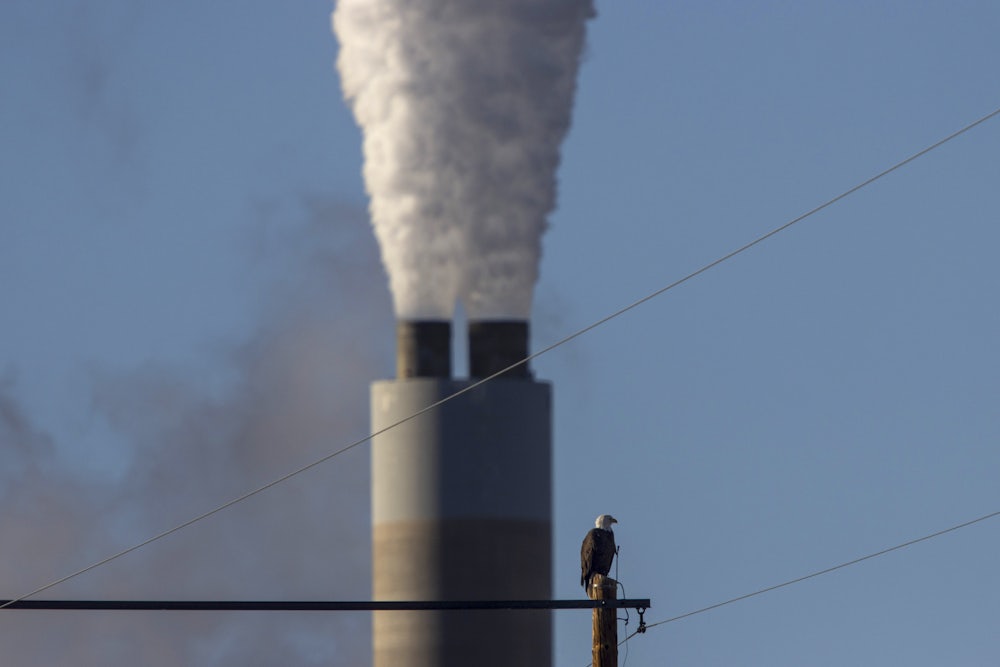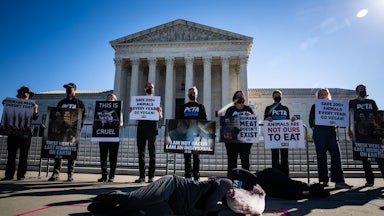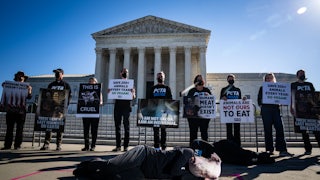Who’s against saving tens of thousands of lives every year? The Environmental Protection Agency last week announced a proposal you’d think everyone would cheer: tightening decade-old regulations on air pollution, with massive projected public health benefits.
Yet the titans of industry aren’t happy. Asked about the proposed changes by The Washington Post, Chad Whiteman, vice president of environment and regulatory affairs for the U.S. Chamber of Commerce’s Global Energy Institute, said that while “it is important to continue making progress, we are concerned that the proposed regulation would stifle manufacturing and industrial investment and exacerbate permitting challenges that continue to hamper the economy.”
The EPA has proposed lowering annual exposure limits for particulate matter produced from power plants, highways, construction, and other industrial facilities. Particulates of 2.5 micrometers in diameter (PM2.5), including soot, are among the most deadly air pollutants thanks to their ability to seep through lung tissue and into the bloodstream. Long- and short-term exposure can lead to heart attacks, asthma attacks, and premature death; long-term exposure to particulate matter has been found to cause between 13,500 and 52,100 premature deaths each year. Air pollution and its health effects are disproportionately concentrated in communities of color. A 2019 study from the Union of Concerned Scientists found that people of color in the Northeast and mid-Atlantic breathe 66 percent more air pollution from vehicles than white residents. The study further found that white residents constituted 85 percent of people living in areas with the lowest PM2.5 pollution from on-road vehicles.
Scientists and public health experts have long pointed out that the current standard of 12 micrograms per cubic meter of air—set during the Obama administration in 2012—is insufficient, leading to unacceptable levels of illness and death, and it has drawn condemnation from the World Health Organization. Proposed changes could bring standards down to between 11 and eight micrograms, which is still above the WHO’s proposed annual limit of five micrograms. A review conducted during the Trump administration found that lowering the annual particulate matter standard to nine micrograms per cubic meter could save between 9,050 and 34,600 lives a year. The previous administration opted to keep current standards in place in 2020, overriding concerns from within the administration. It also disbanded a panel on particulate matter pollution in 2018, leaving scientific review exclusively up to the Clean Air Scientific Advisory Committee.
Environmental and public health advocates say the higher range of proposed new limits is unacceptable, and the proposed update does not go far enough. They’ve also criticized EPA Administrator Michael Regan for declining to revise daily exposure limits. A final rule is expected to be decided this summer following a 60-comment period once the proposal is posted on the Federal Register.
So who else, aside from the Chamber of Commerce, would prefer to keep air pollution levels—and therefore death levels—high? Portland Cement Association president and CEO Mike Ireland told the Engineering News-Record new standards would be “technically and economically infeasible for the industry to meet.”
Will Hupman, vice president of downstream policy for the American Petroleum Institute, said in an emailed statement the current standards “are effective and will continue to build on significant improvements in air quality while protecting public health. There is no compelling scientific evidence or requirement under the Clean Air Act to support more stringent PM standards that would likely place new regulatory and cost burdens on state and local governments, businesses, and the public.”
Relatively few counties are out of step with the current standards, although those are counties that contain major population centers. Just 15 counties in the United States currently exceed the current limits, according to the EPA. All but one—Allegheny County, Pennsylvania—are in California. Four are in the Los Angeles metropolitan area and eight in the San Joaquin Valley. An additional 51 counties have annual exposure limits above the nine microgram limit, and would need to lower that below the new threshold by 2032.
Alex Bond, deputy general counsel for Climate and Clean Energy at the Edison Electric Institute—a trade association for investor-owned electric utilities—said over email that while the EEI is “still reviewing the details” of proposed changes, “we look forward to continuing to work with Administrator Regan and his team at EPA as they finalize the rule to ensure that implementation of the standard is consistent with our industry’s ongoing clean energy transformation.”
And that’s really what it comes down to in corporate America: As important as human life might be, polluters want to ensure that preserving it doesn’t cut into their ability to do whatever they want.










